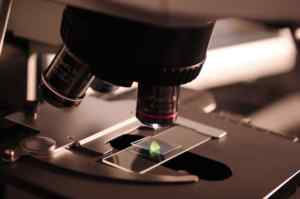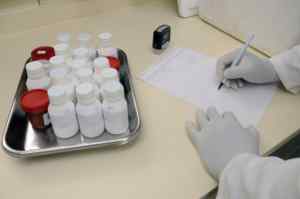Traditionally, us guys don’t have a lot of options when it comes to contraception. There’s condoms, vasectomies, “pulling out”, and that’s about it. However, all of these methods have major setbacks. Condoms take a while to put on and can kill the mood. Vasectomies are convenient, but are not reversible without invasive surgery. And pulling out, well, is the hallmark of bad decision making.
Every now and then, there are headlines that give hope to all the men looking to avoid children in their lives. Like the Italian guy who invented a magical “switch” implant that is now on permanent hiatus. Headlines like those, which never seem to go anywhere.
Luckily, there are some new options in development for these men.
Gel contraceptive
This form of male birth control is closest to being put on the market. Called Nestorone-Testosterone, the gel contains two hormones, testosterone and progestin. The key ingredient here is the progestin, a synthetic version of the female sex hormone progesterone, which shuts down testosterone production by suppressing the gonadotropin hormones. Lower testosterone means lower sperm production, which means a lower chance of pregnancy.
Of course messing with hormones can have very negative consequences, which is why the gel contains some testosterone to ensure levels are not too low, which can cause low libido and delayed ejaculation.
A study funded by the National Institute of Child Health and human development revealed that 90% of men who used the gel had a sperm concentration lower than one million per milliliter, which is low enough to prevent pregnancy with minimal side effects.
Still, there is a long road to go. Right now trails are being performed on 420 couples around globe- if successful, the contraceptive could move onto the next stage, which involves trials on an even larger scale. It might be another ten years- but it’s a start.
Birth Control Pill
The problem with male BC pills is the short half life of sperm-suppressing hormones, meaning the drug decays very quickly, and so do its effects. However, a new study featuring an experimental male BC pill seems to show promise.
Dimethandrolone undecanoate, or DMAU, is a drug that works in a similar way to the gel contraceptive. Like the gel, it contains both testosterone and progestin. While its effectiveness and reducing sperm count is still unknown, the trials show that the drug is safe to take every day for a month, with minimal side effects.
Researchers at the UCLA and University of Washington are beginning a joint study that tests the efficacy of a DMAU injection, which could work several months at a time, which would be more convenient and more similar to injectable female birth control methods.
RISUG
RISUG, which I have written about previously, is a promising new procedure that is like an advanced form of vasectomy. The method was pioneered by biomedical engineer Sujoy Guha from the Indian Institute of Technology, and involves injecting a gel into the vas deferens (the tube that carries sperm to the semen), preventing sperm flow without affecting production or hormone levels. Unlike a vasectomy, this process is (theoretically) easily reversible, requiring only one other injection to dissolve the block. This avoids the inconvenience and possible failure of a vasectomy reversal, which is like stitching together the ends of two wet noodles. Not to mention, it’ll be a lot cheaper
It will be a considerable amount of time before this product hits the US market. The rights to the technology have been sold to the Parsemus Foundation, a nonprofit based in California, but there are unfortunately no human trials coming in the near future.
Regardless, we can expect to see many of these inventive new technologies in pop up in the next decade or two. Adoption of new birth control methods could mean a major reduction in unplanned pregnancies, especially in more developed countries as birth controls cheaper and more convenient worldwide.
 Vasectomy may NOT be a good choice for the men in Minnesota who:
Vasectomy may NOT be a good choice for the men in Minnesota who:
 The fear of increasing one’s risk of prostate cancer has stopped some men from undergoing a
The fear of increasing one’s risk of prostate cancer has stopped some men from undergoing a  One of the biggest risks and potential effects of undergoing a
One of the biggest risks and potential effects of undergoing a  Led by a small team of scientists from the Institute for Therapeutics Discovery and Development at the University of Minnesota, the search for a non-hormonal male birth control pill ultimately zeroed in on the toxic substance known as ouabain. Found in two types of African plants, ouabain was traditionally used as poison on hunting arrows and is sometimes medically used to treat heart arrhythmias.
Led by a small team of scientists from the Institute for Therapeutics Discovery and Development at the University of Minnesota, the search for a non-hormonal male birth control pill ultimately zeroed in on the toxic substance known as ouabain. Found in two types of African plants, ouabain was traditionally used as poison on hunting arrows and is sometimes medically used to treat heart arrhythmias. If you’re looking for a natural, inexpensive way of boosting sperm quality and overall fertility, the answer may lie within…tomatoes?
If you’re looking for a natural, inexpensive way of boosting sperm quality and overall fertility, the answer may lie within…tomatoes? As the sixth annual
As the sixth annual  From self-order kiosks to robot vacuum cleaners and robot cafes, the rise of robot-assisted experiences in recent years has been undeniable. But would you ever consider participating in a robot-assisted surgical procedure?
From self-order kiosks to robot vacuum cleaners and robot cafes, the rise of robot-assisted experiences in recent years has been undeniable. But would you ever consider participating in a robot-assisted surgical procedure? However, costs aside, it’s still noteworthy to highlight the reliability and effectiveness of robot-assisted vasectomy reversals.
However, costs aside, it’s still noteworthy to highlight the reliability and effectiveness of robot-assisted vasectomy reversals. 
 Dr. Shu and One Stop Medical Center are proud to support WVD for a sixth straight year. Our clinic will offer a gift card for one free large pizza to all patients who
Dr. Shu and One Stop Medical Center are proud to support WVD for a sixth straight year. Our clinic will offer a gift card for one free large pizza to all patients who  1. Walnuts
1. Walnuts 5. Dark Chocolate
5. Dark Chocolate After undergoing a
After undergoing a  Last month, we
Last month, we  The height of the eugenics movement (1920s to mid-20th century) saw compulsory sterilization programs established in over 30 states, resulting in over 60,000 sterilizations of often healthy people. Criminals and prison inmates were especially targeted, as well as those deemed “feeble-minded,” mentally deficient, or simply capable of passing on undesirable genes.
The height of the eugenics movement (1920s to mid-20th century) saw compulsory sterilization programs established in over 30 states, resulting in over 60,000 sterilizations of often healthy people. Criminals and prison inmates were especially targeted, as well as those deemed “feeble-minded,” mentally deficient, or simply capable of passing on undesirable genes. Your doctor will test your semen approximately 12 weeks after your vasectomy to examine for presence of motile sperm. If test results show that your semen is sperm-free, then the vasectomy was successful, and additional birth control will no longer be necessary. Some patients’ semen may show a small number of non-motile sperm, whereby the risk of pregnancy is very low, and additional birth control may not be needed.
Your doctor will test your semen approximately 12 weeks after your vasectomy to examine for presence of motile sperm. If test results show that your semen is sperm-free, then the vasectomy was successful, and additional birth control will no longer be necessary. Some patients’ semen may show a small number of non-motile sperm, whereby the risk of pregnancy is very low, and additional birth control may not be needed. Do inform your doctor about any other medications you may be taking.
Do inform your doctor about any other medications you may be taking.



 It might seem odd to dedicate an entire day to vasectomies, but for Dr. Shu and the other 1,200 doctors participating in World Vasectomy Day on November 17, it’s an important event that spreads awareness on the most effective but underutilized methods of contraception: the vasectomy.
It might seem odd to dedicate an entire day to vasectomies, but for Dr. Shu and the other 1,200 doctors participating in World Vasectomy Day on November 17, it’s an important event that spreads awareness on the most effective but underutilized methods of contraception: the vasectomy.









